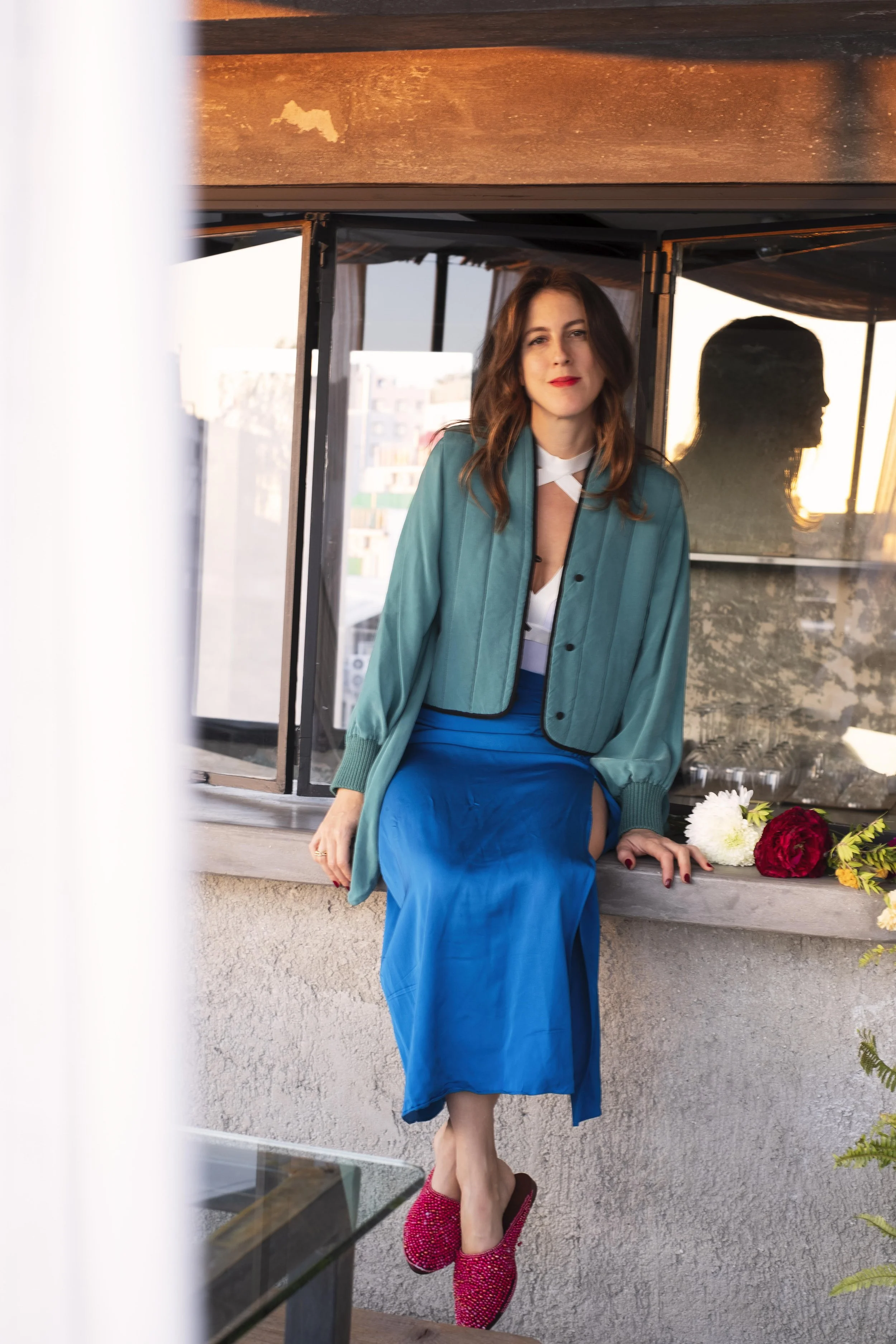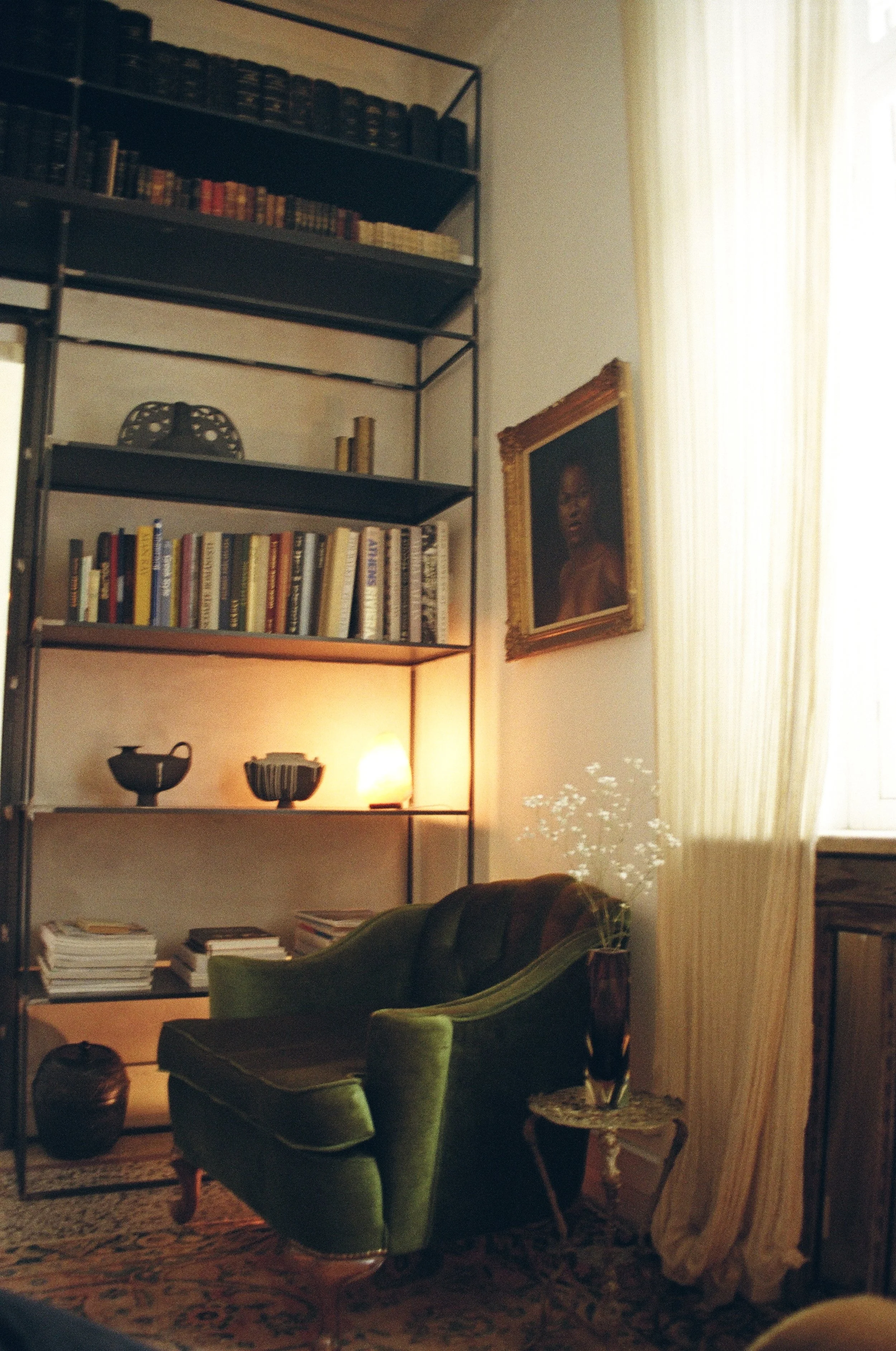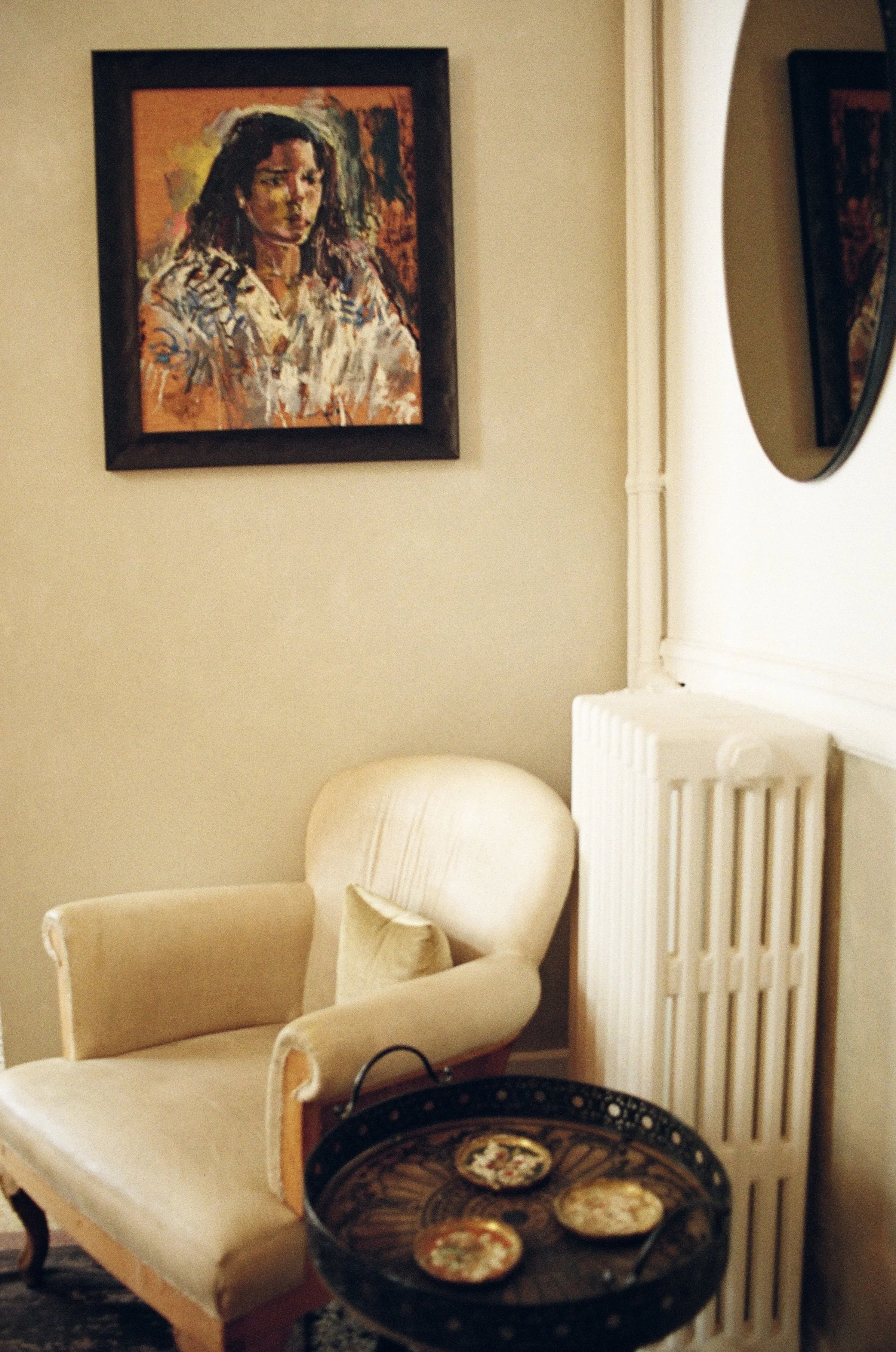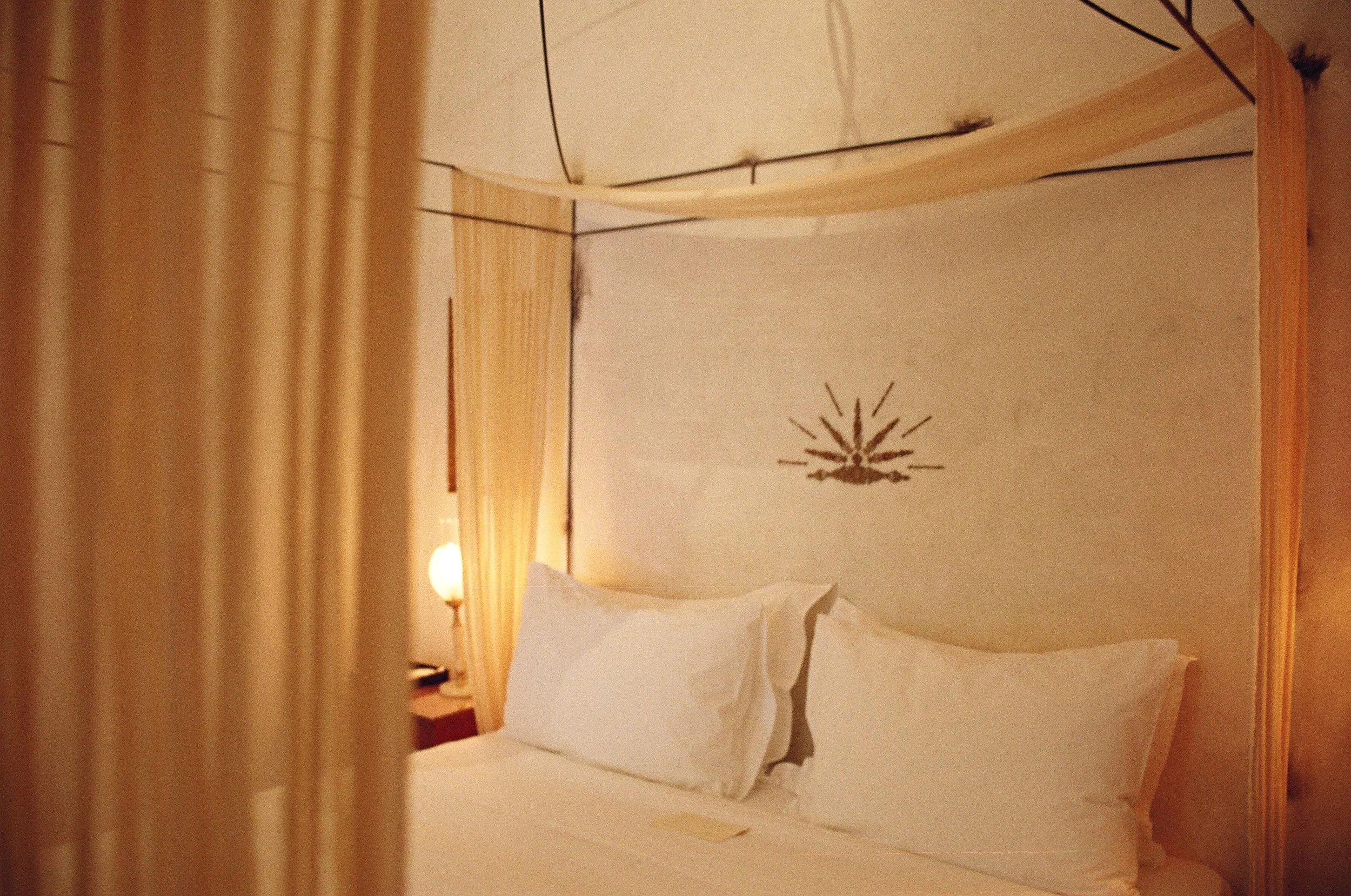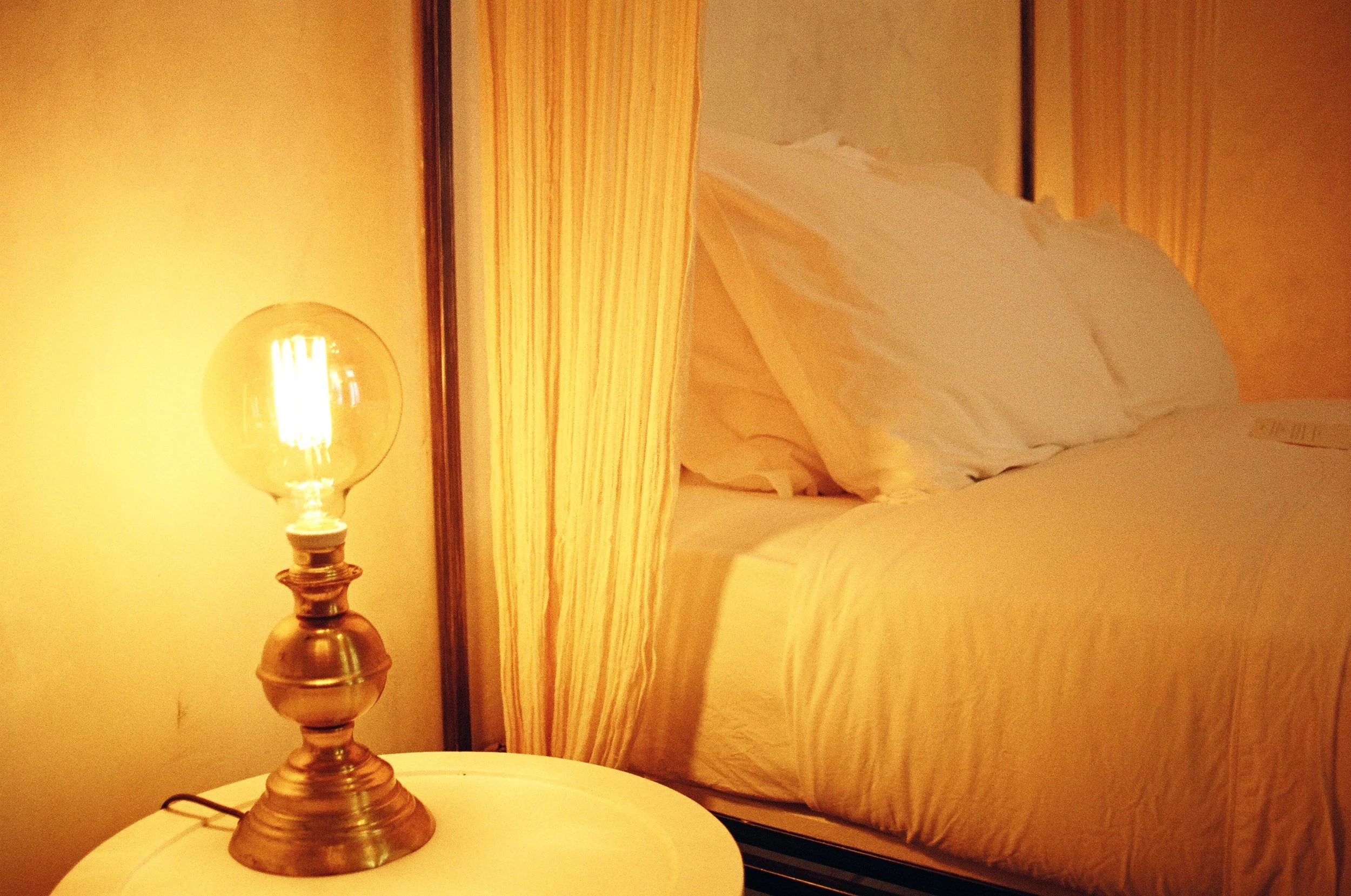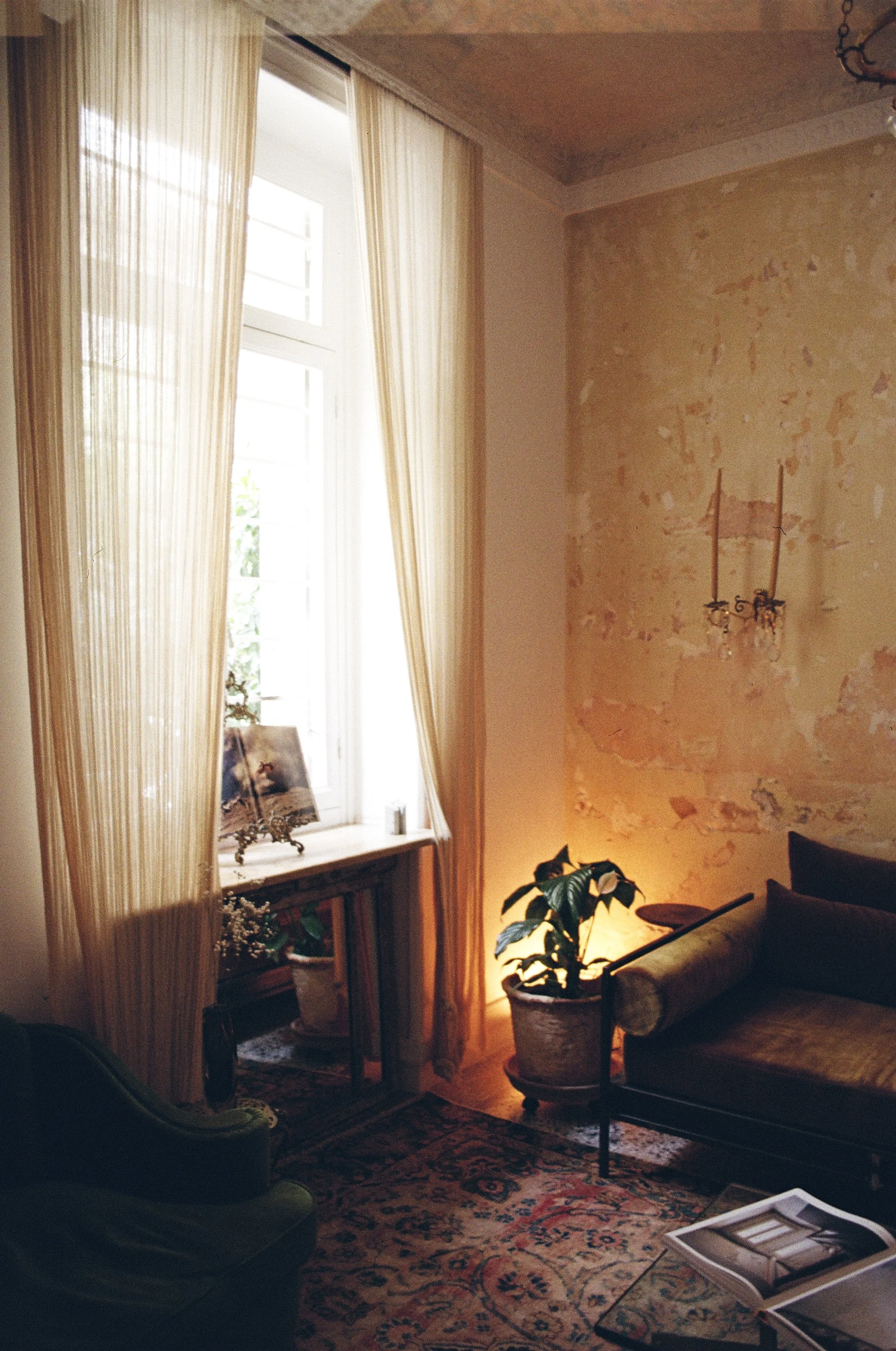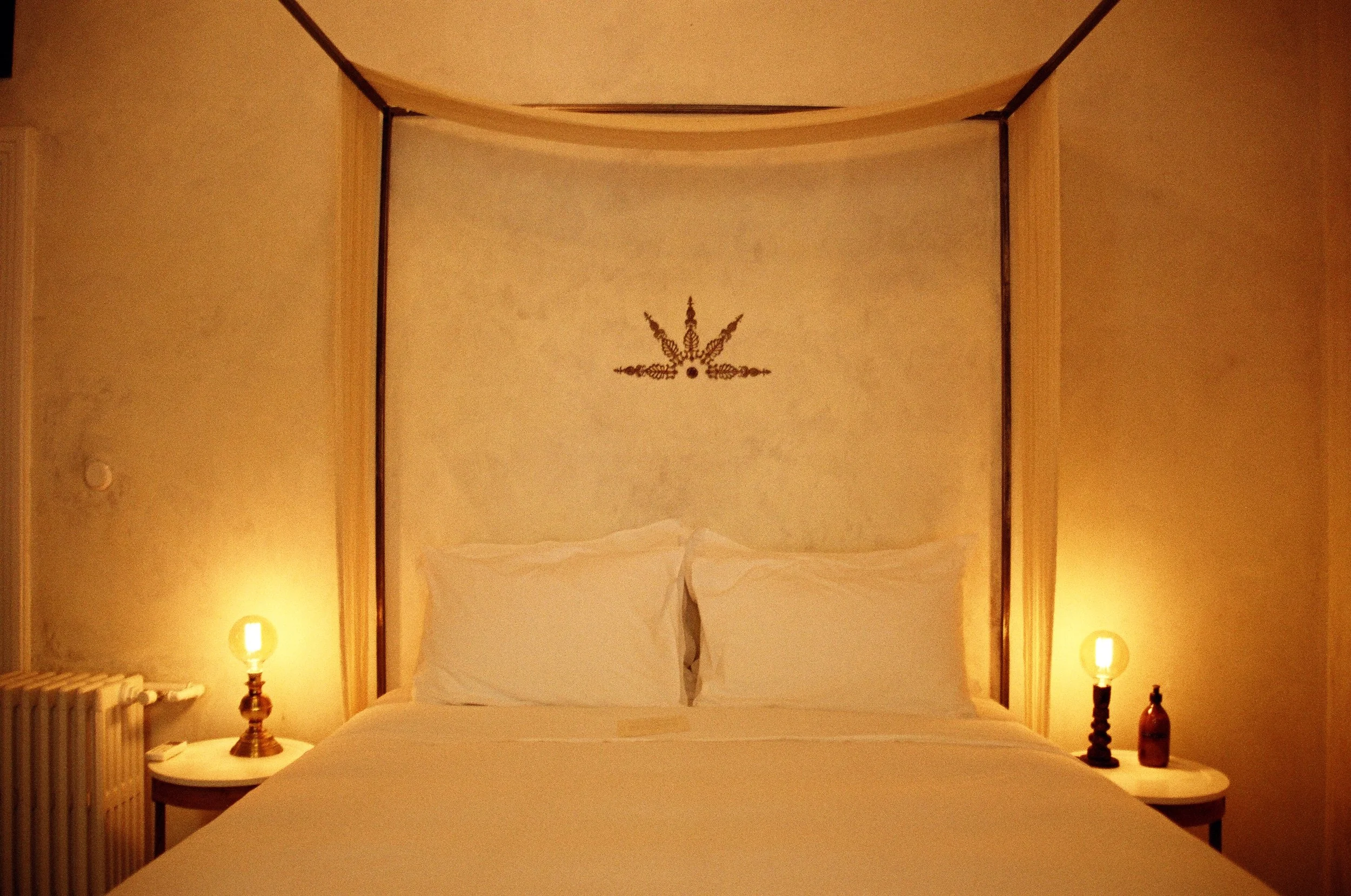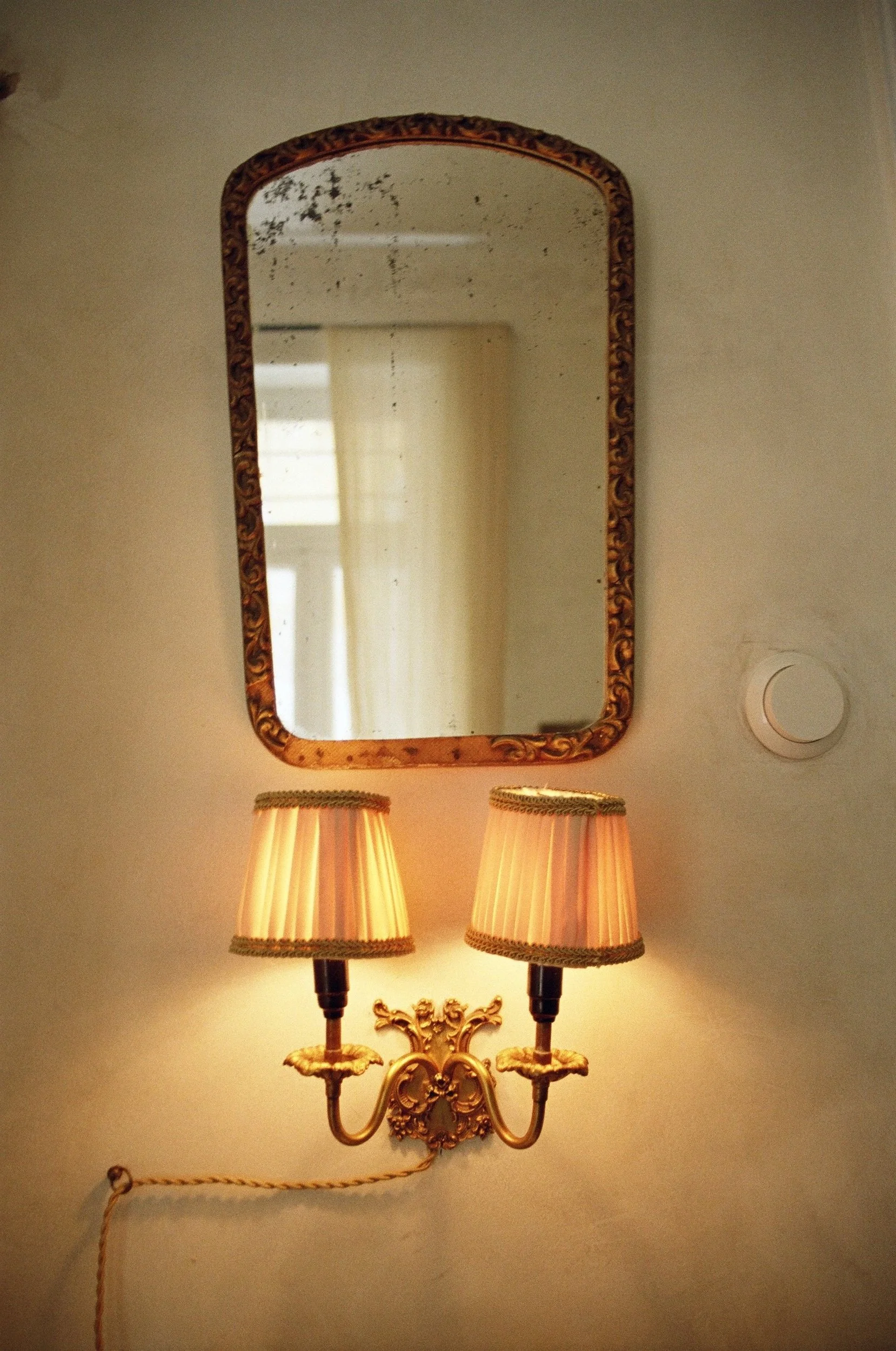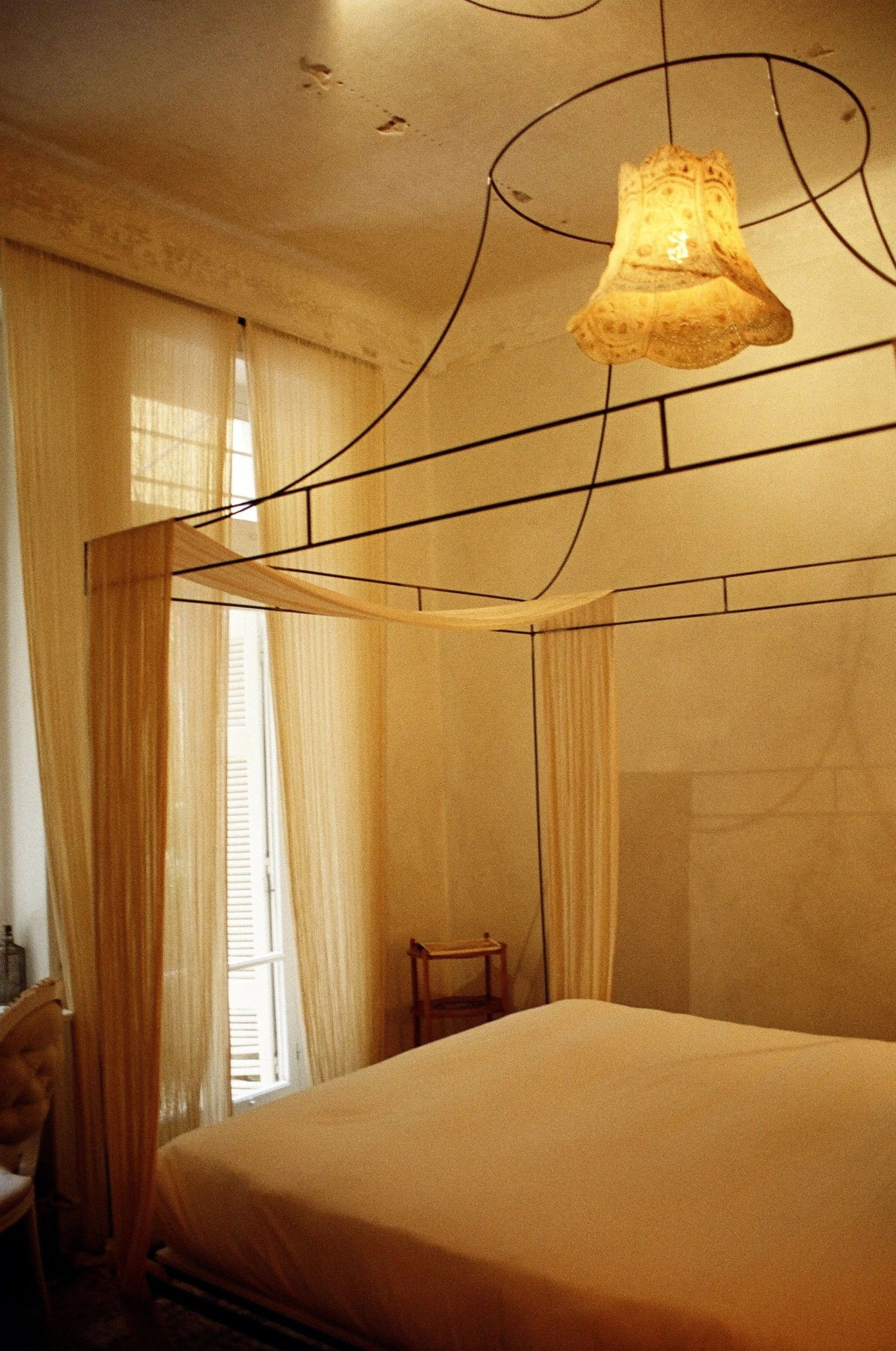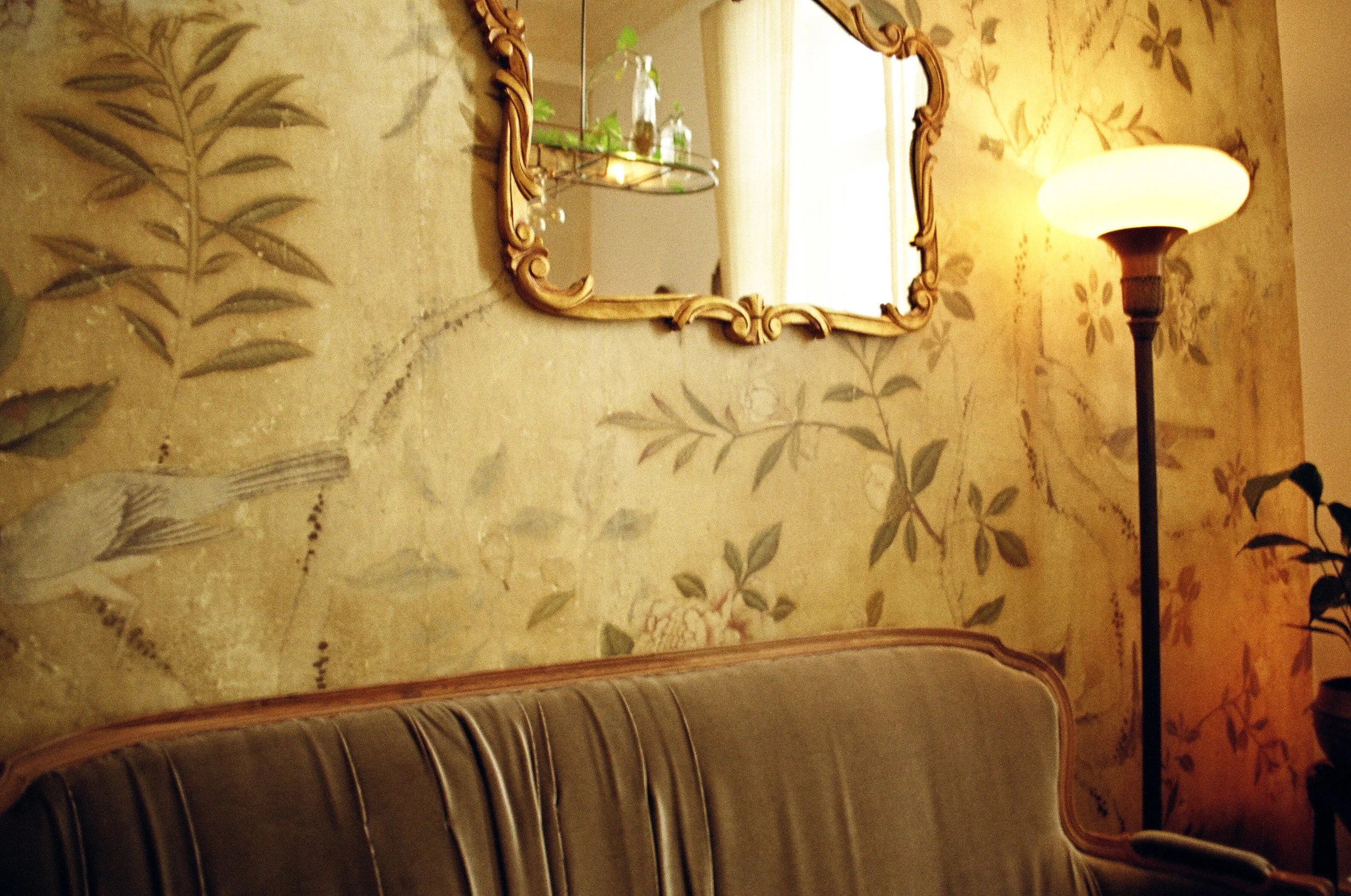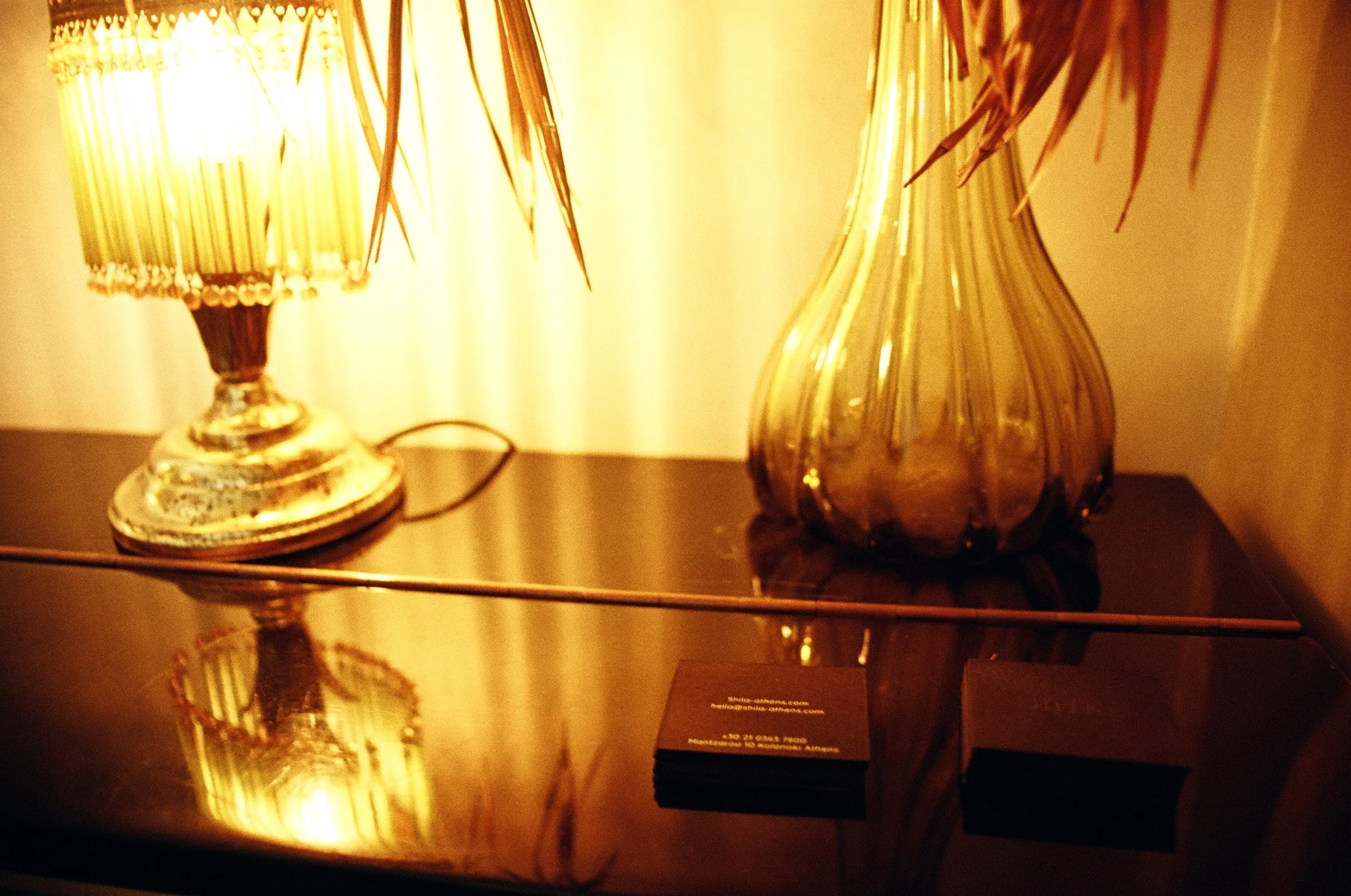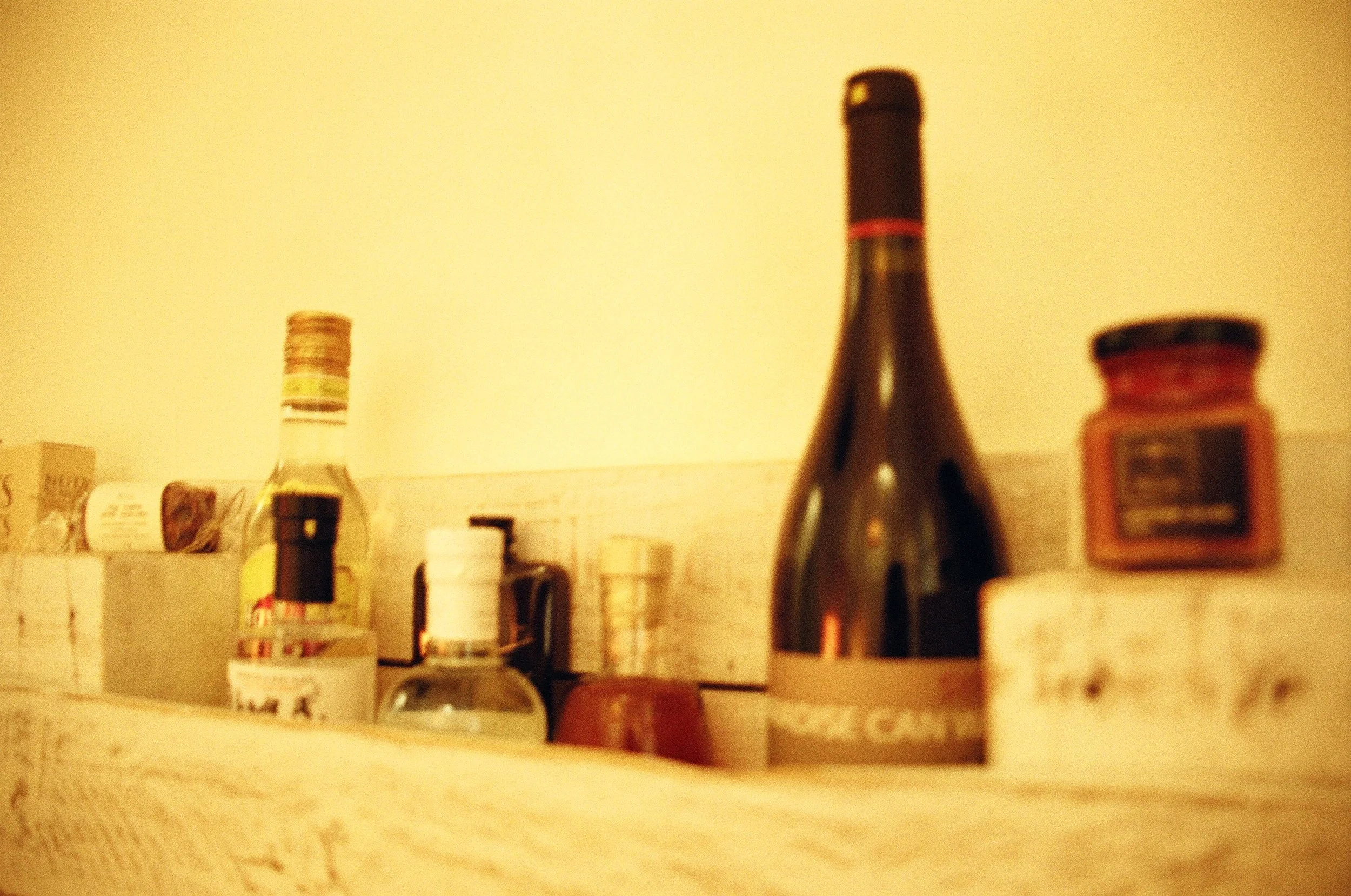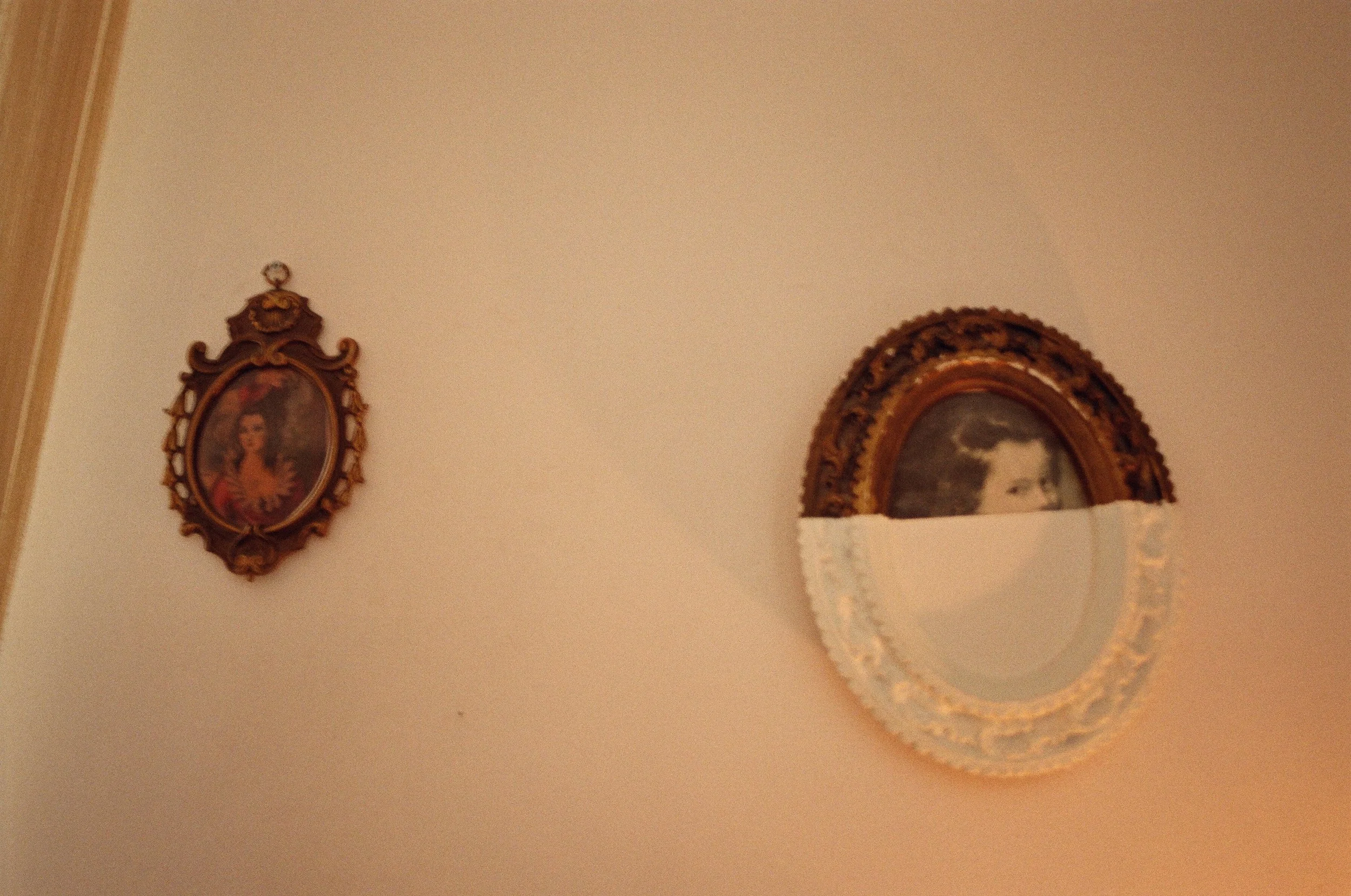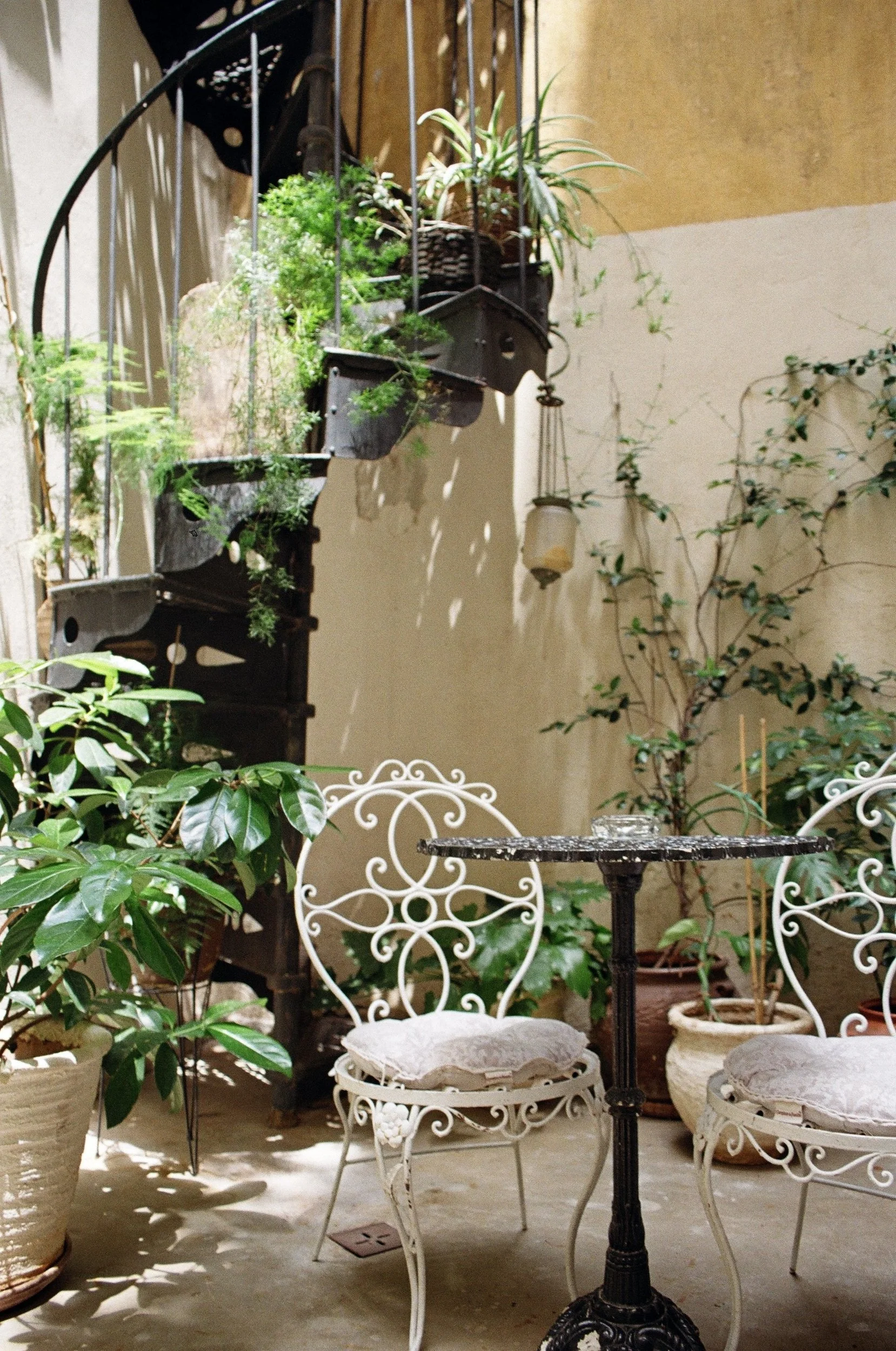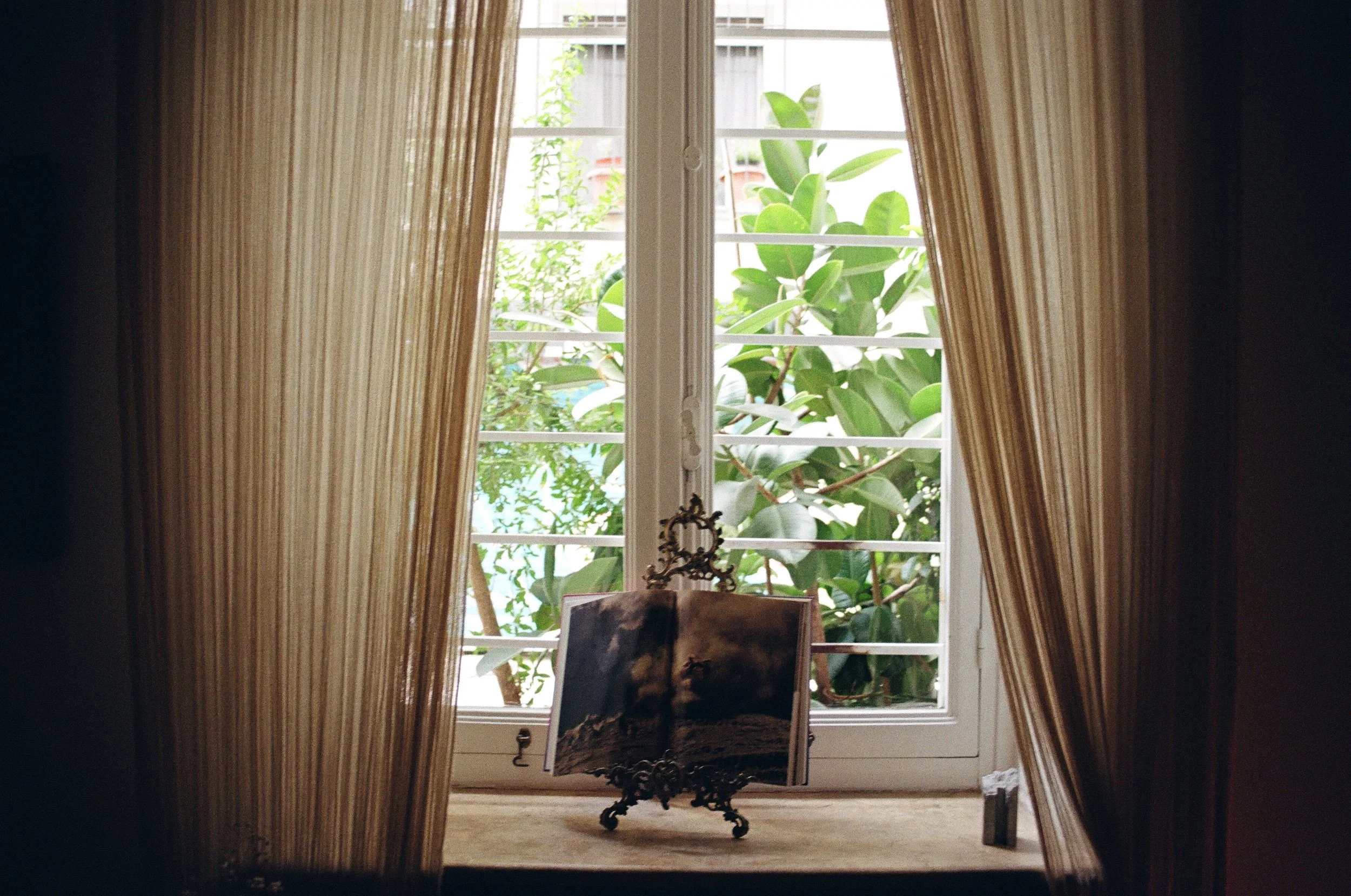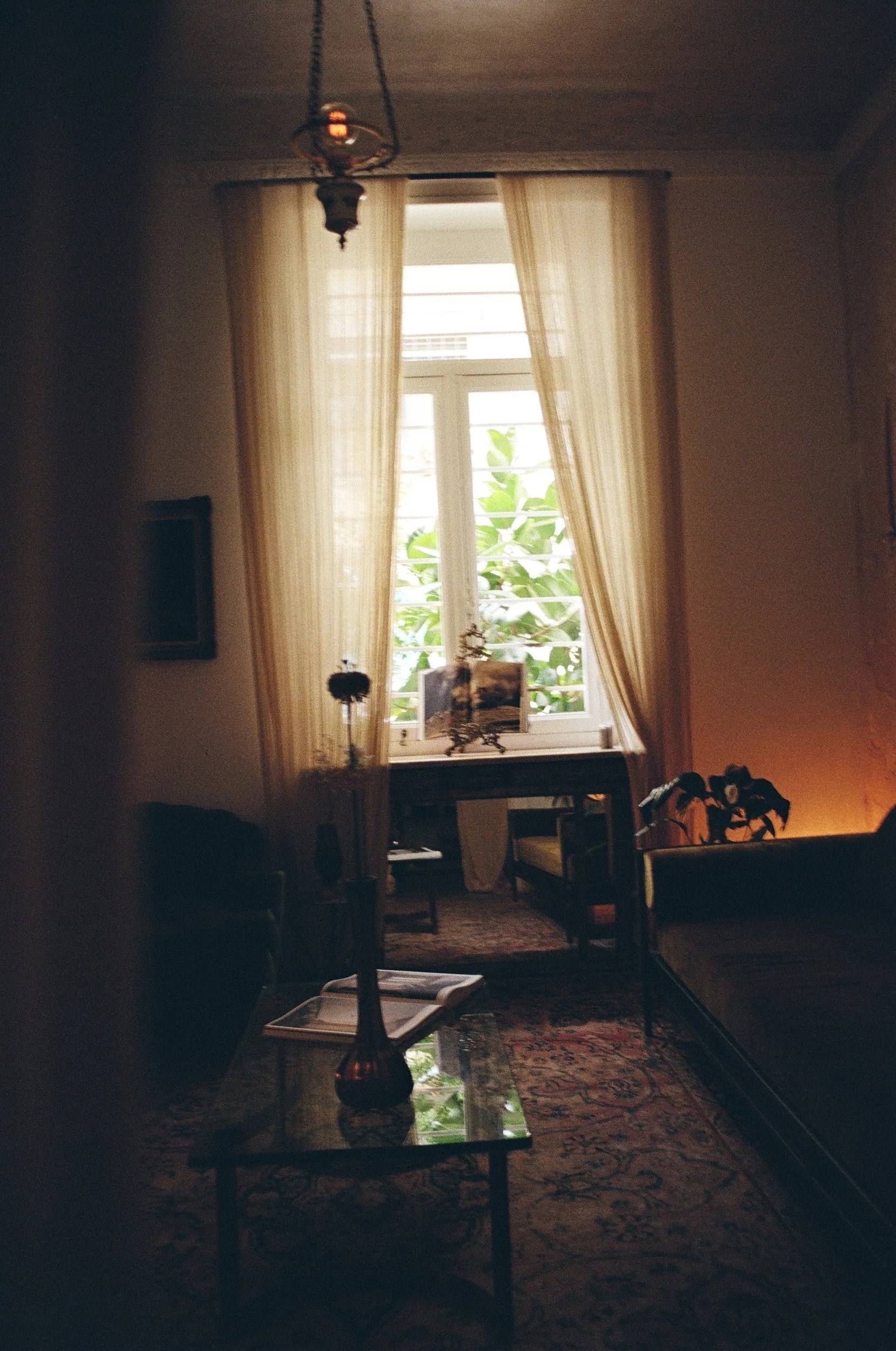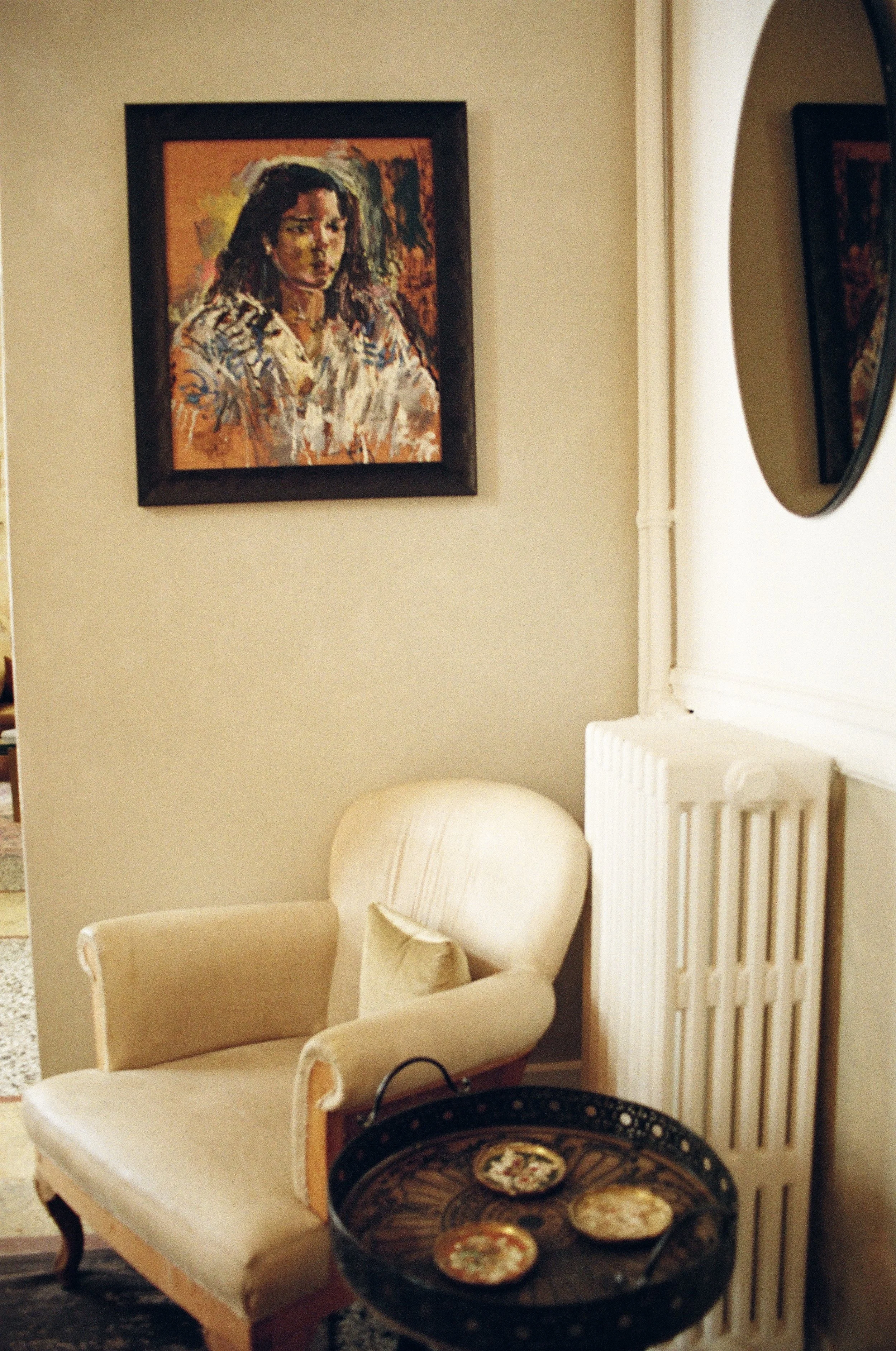in conversation with . . .
nATASSA pAPPA
Photo courtesy House of Shila
Natassa Pappa is the publisher of Desired Landscapes, an independent magazine dedicated to exploring cities through visual culture. Each issue is comprised of essays from diverse contributors that investigate the unique sense of place in locations that range from hyper-touristic to under-the-radar to imaginary.
In between running the magazine and teaching graphic design at the American College of Greece, Natassa leads customized walking tours of Athens that highlight the city’s vernacular architecture, graphic design and typography, and oral history.
Keep in touch with Eftihia:
Instagram
@nat.pa and @desiredlandscapes
Website
www.desired-landscapes.com
Words by: Tina Iasonidis
Photos by: Tina Iasonidis, unless otherwise noted
Interview recorded:
In your own words, who are you, and what do you do?
It’s funny because today, I started my day by going to a doctor and for some reason they ask what do you do and I couldn’t reply. [Laughs]
I started in graphic design, so I like to say this is my background. Then in my master’s, I got expertise in graphic design in connection to public space.
I really like cities, I really like architecture, urbanism, all the systems that run it, and also the aesthetics of it. I was flirting with architecture, in a sense, but wasn’t an architect.
Today, I call myself a publisher, but it’s too heavy to say that. I think the whole journey is from designing to editing something, creating something, and publishing it.
The process of making magazines is what I remember since I was a little child. For me, that’s the zero point. I think that the graphic design was just something in between to get me into this.
It’s very interesting how you describe publishing and creating the magazine as the thing that brings together all your interests. I feel the same way. As someone who grew up making scrapbooks, collecting and hoarding various things, and putting it together, it has strangely also materialized with my own career and trajectory to bring together the different elements of design and disciplines that I enjoy.
The way that we collect material and do research, we also connect with people. You have this kind of network expanding from issue to issue, which is also very important for me.
One of the main things I enjoy in the walks is this connection with people from different cities, different countries, different perspectives.
For me, it’s exactly the same process: gather information, care about the history, care about the future, and how you tie the story through. It’s a medium―whether a magazine or a walk.
What led you to graphic design?
It was the easy answer. When you’re in high school, you have to choose, and I was doing a kind of scrapbook, and somebody said, “You have to be a designer, this is the thing for you.”
I was quite in between things. I was also thinking marketing or maybe cultural heritage, but for some reason, last minute, I just put graphic design. This is what I got. And I didn’t know what it was.
One part of graphic design is publishing, but from the angle of design, not really the angle of writing. I think that I’m changing to go toward the writing angle, and through the magazine, I tried to put them all together. I design the magazine and also write for it.
How did you launch this career? How did your studies lead you here?
I used to work even before my master’s. I did all the classic things graphic designers do like branding, logo types, book design. When I was in the Netherlands, where I studied, I understood that the methodologies of architecture and urbanism aren’t actually needed there, because they’re perfect cities. Everything is regulated, everything’s clean, no cars. They were asking to bring in the opposite. They were looking for the spontaneity of Mediterranean cities. I found this as an impossible thing to do. How can I bring Athens to Rotterdam, for example? This was the point that I understood that I have to go back to Athens to use all the things that I’ve learned, and bring a bit of more documentation or structure to a very chaotic city.
This is how I started. It was right in the peak of the economic crisis in 2012. Everybody was laughing, like, “Why do that? Why go back, this is crazy, it’s suicide, don’t do it.” I started with freelancing, doing some book design. I was young and I had a lot of enthusiasm. I wasn’t afraid of anything. I said, “Okay, I can design books, I can design magazines.” And I did it because of this loss of fear.
When you like something you try, if the passion’s there, you can overcome the obstacles. So I launched the career here of book design, and later on, map design, like guidebooks. Then I felt that it was time finally to start my own magazine. I did it on the side and was also teaching at the same time. Step by step, I was building this bridge from design to writing.
How would you describe your style and taste in graphic design?
I think that at heart I’m a modernist, so I want function, minimal elements, synthesis. I think this fits pretty well with the topic that I’ve chosen: cities. The city is exactly the opposite, especially the Mediterranean city.
How would you describe modern Athens to someone who has never visited?
It’s very spontaneous. It’s full of surprises. It’s full of enthusiasm.
Either this comes from the creatives that have their visions, and they have the passion to go for them, or from the people who decide to come to Athens and live here. They bring with them the enthusiasm of tourists.
It’s a city for young people. If you’re around twenty to thirty, it’s the ideal city. It offers so many things. It becomes difficult later on, when things get more serious in terms of bureaucracy, or quality of life. Just to give you also the bad side of it, it’s a very dirty city.
Living here, you have questions about preservation, about identity. It’s very fun to ask Greek people how they connect to ancient Greece. It’s really a huge gap from then. The issue of identity is something interesting for me, and through the magazine I tried to approach it not only in Athens but also in other cities.
In an essay of yours published in Slanted Magazine’s “Athens” issue, you said that Greek graphic-design history is “invisible” and “there’s no hope for Greek graphic design to become recognizable one day, there will only be lack of national self confidence.” What was the context of this pessimistic view? Do you still feel the same way?
It’s so funny, because I wrote this essay in like 2009. I was a student and Slanted saw it somewhere on my website or something, and they asked me to publish it. I was like, “No, we shouldn’t do it. This is a very dark and not updated,” but contributions were a mix of texts coming from different years, so it didn’t matter if it was old or new.
I definitely disagree with that today. There is this thing with Greece looking to the West, becausewe want to be like the West. But I think this hides ouridentity, like we are not proud that we’re in the centerof everything. We’re in the center of East and West,we’re the bottom of the Balkans, we’re in the top ofAfrica. So it’s a very nice location. With this geographical location come very unique attributes that we don’t really use.
One of them is the Greek alphabet. If Greek designers were more proud of what we do, they would export this kind of thing. It’s a design we don’t see anywhere else. Instead of that, during the time that I wrote the essay, people were using the Latin alphabet in advertising. Big communication companies were using it to attract young people, so the Greek language was lost. Not lost, but it’s not very explicit in Greek graphic design because we want to be read by everybody. If we write in Greek, we’re going to be read from Cyprus, Greece, and the Greek diaspora, which is still big. I would be okay with that.
There’s plenty of things we can extract and be inspired by to create new forms of modern Greek design. Most of it now looks like the Bauhaus, which is one hundred years ago. [Laughs]
Desired Landscapes is a magazine and bespoke walking-tour series that “explores the sense of place through visual culture.” What does this mean to you?
I’m a graphic designer so I know things about maps, photographs, illustrations. I process cities through these screens. This is the main axis of the magazine. With these lenses, you see things that other disciplines don’t see. I was interested in memory and documentation. This is a solution to seeing not just cities, but what stays there afterwards.
Through your lens of graphic design and place making, why was documenting cities through their typography, oral history, urbanism, and the vernacular important? How is it capturing this screenshot of life in these cities at this time? What is the importance of that as things like Instagram make it easier to see day-to-day life in different cities?
One part is that if you document the typography, the vernacular, and these kind of things in cities, it’s like you have a snapshot of previous times. This goes back again to the question of identity and what is the “original city,” which is, of course, impossible, but I try to understand the links to the past.
It also links with the other question about Greek typography: “What is there that we have that’s interesting or intriguing, that we have forgotten?” For example, there’s a character in the Greek alphabet―it’s the O and the Y together. This character has faded. Nobody uses it, even in writing, or in signs. But if you see the signs of the ’60s or ’70s, you can find it a lot of times. It’s a small reminder of something that used to be Greek and unique and we forgot it.
Living room style lobby
What has been the local and international reception of Desired Landscapes, and what has the profile of your readers been?
That’s always the case with Greece―it’s not about my product. First, people appreciate abroad, and then Greeks appreciate it. Lately, more Greeks know it.
The reader profile is people who like conscious travel―it’s more about meeting other cultures, connecting with them, and making friends or already having friends in other cities and going there to see them and local life. People who live in different countries; for example, “One year, I stay in Athens, three years Copenhagen, and then New York.” Cosmopolitan people? Or civilians of the world.
How have you connected to people in Athens with your project? Do you have people who are local coming on your walking tours?
Yes, it’s amazing. It’s not the majority. But when this happens, the walk is totally different. It’s funny to see people living in Athens and not knowing the streets. It’s not that I picked very hidden streets. [Laughs] When you go to work, you tend to take one route. If you’re a local in a city, you’re not as curious as you would be as a tourist. I like to bring this tourist layer to their local lives.
The interesting part is that if you show them the arcades, designer shops, or nice tavernas to eat, these people are going to go to these places again, because it’s their own city.
Have you kept in touch with people who are local that have done the tours? Have you found new friends and new in-person communities?
Yes, I do, but mostly with the people abroad. I think this is because Athens is a very busy city.
In Athens, most people are hard workers; they don’t have free time. It’s more the people who go abroad and then they see something that they saw at the walk and they sent me photographs, or I go to their countries, or the opposite. It’s crazy because I met with people that I wouldn’t imagine.
One day two Russians came to my tour and they were very well dressed and I was going to show them the dark sides of Athens, like the hidden passageways, and I was afraid that by mistake they chose the wrong tour. At the end of the day, they were amazing, and we still talk to this day. It’s a very nice network, and some of these people also write for the magazine. Or the opposite―if they write for me, they come to the walks. It’s like-minded people.
What is the process of coordinating and developing the issues since you are a one-person team? What’s the design development process, and how do you decide on what to feature and where to feature?
Every issue features a mix of cities. I would like this mix to have a contrast. I want to have cities like New York, which are iconic, and everybody knows them, next to cities that somebody wouldn’t even imagine to go for tourism. This defines the issue.
This means that I have to find people writing about these cities. It’s a process that happens at the same time. Maybe somebody approaches me and they say, “I want to write,” we propose some cities, and I can see if they fit in the mix. Because I do everything at once, it’s very, very difficult. It takes a lot of time.
Lately, since the magazine is going better, there is a team of regular writers. Every time they will offer a different city, and have some guest contributors for the rest. The main thing about the editorial is that you have to have this mix of cities and also mix of perspectives, so we have personal narratives next to academic analyses.
When is the next issue coming?
The idea was to have an issue every six months, but it was impossible. I think the second issue came on time, but then you know, COVID hit, and it was a crazy time. Now one releases every eight months or one year. I don’t worry that much anymore. The process is very long―choosing the right person to write, discussing the angle, perspective, and the structure. It’s a collaborative work. We really put a lot of time in that. The new issue launches on March 18, 2023.
What can people expect from this next issue?
I can reveal the main section, which is the city guide section which we have in every issue.
This city guide is going to be about San Francisco. We’re discussing how the grid map of San Francisco doesn’t really reflect the reality of the city because it’s full of hills.
Do you have someone who’s reporting for you?
Yes, I’m working with a writer. She has family in San Francisco and has spent some time there. She’s connected with the city.
In the previous issue we talked about Seoul, and we did it through the lens of somebody who’s never been to Seoul. It was all about the feelings and the Korean way of life, and how you see locations of the city in movies and what you see in reality―how the tourist industry took these locations and made them something bigger.
Inside the suites.
How did your business respond and evolve with the pandemic?
I think I was about to launch Issue 3 in February 2020. The whole issue was ready. It got stuck at the book binders because it was the time when if one person had COVID, they had to shut down the company and close for fifteen days. I couldn’t accept the fact that my magazine is ready, and I cannot open the door to get it. That was a shock.
That’s why you see me today more cool about in how many months we publish, because there’s always something like this. Now we have problems with paper. Like you cannot bring it, delays to bring it, it’s way more expensive. I’m a bit more relaxed with that.
With Issue 4, I had my first online launch, so I did a series of interviews on Instagram. You can still find them in IGTV featuring some contributors discussing how they felt about the magazine. It was the first time that I connected with the global audience just by launching the magazine. I’ve never done it again, but it was a nice experience.
I couldn’t go to the book fairs. That’s a big thing that I do. I like to go to at least two or three per year. I was really sad about that.
Before the pandemic, I just launched my first walking tour in London. “It’s going abroad, I’m going to do walks in different cities!” and then COVID hit, and it took me back to square one.
For many people, it was a time of isolation, disconnection from community, and also desire for escapism. What’s it been like to restart the tours and reconnect with your community?
The first days that we had to wear the mask I was really afraid. I expected other people joining the walks were. There wasn’t a big change, because the walks that I do are very small. Lately I just do private walks, so I have three or four.
I vividly remember one of the first now. It was a private walk. It was somebody from Greece, a local who felt so stuck in his house all these months. He was working a lot, and he felt rebirth, let’s say, by walking in the city. The reception I had from him was so overwhelming, like, “Wow, I’m back out there! I’ve never seen this building!” or “I remember this. My mother went there.”
He said stories that were amazing, and that was a lesson for me to understand the value of doing the walks for locals.
I take everything for granted―like, “Okay, I know this building, I know this street. I didn’t show you something weird.” That walk really made me understand why I do this, and especially after the pandemic, it was exciting to be out there and do these things.
What’s your favorite part: doing the printed matter? Or doing the tours?
You’re killing me. [Laughs] I’m equally happy at the streets, with people, explaining my favorite city. I’m equally excited when I read texts about cities that I’ve never been to, somebody telling me a story. It’s the same feeling, wanderlust.
I noticed you also repeat certain cities across issues with different contributors.
Some cities repeat, because we find other people covering another topic in the same city. I ask them to repeat Athens in almost every issue because it’s the base of the magazine, and I like to have this connection.
Are there any cities or places that you personally want to go to and include?
It was the first issue, when I went to Tokyo. I had wanted to go so much all these years. That’s the first city guide that you’re going to find in the first is- sue. That’s a personal one.
Now the list is super big. There’s so many places that I want to see, but I don’t really connect it with the magazine anymore. I have it in my mind, but I prefer to go there and experience by myself and, you know, have some joy. [Laughs] If something comes up, “Okay. I think it’s covered by the contributors.” I travel through their eyes, so I feel somehow not really hungry.
What advice do you have for people wanting to start their own niche, independent publications?
Don’t think about it, just do it. Because if you think about it, and you realize how difficult it is, you’re going to stop. I think that the people who have these kind of publications are really, really in love with this kind of thing. Otherwise, it’s very difficult to do it. I was younger, I didn’t care so much about the money part. Be naive.
How did you end up making it financially feasible?
It went well for me because I was into the magazine scene as an observer for years. My first thesis was a magazine. I participated in symposiums, conferences. I knew a lot of things from before, so I felt a bit prepared. When I launched the magazine, I personally did the distribution. I contacted all the magazine shops that I wanted to be in. And in most cases, I went in, so it was a good start. Now the challenge is to go to a bigger audience.
Now we have a readers base, but I know there are other people out there beyond the design scene, that would like to read the magazine, but they can never find us because they don’t go to these magazine shops, for example. Now it’s a question of, where do you place the magazine? It’s written in a way that anybody can read it, it has no jargon, it’s not about architects. The question is, how can you introduce this magazine to these people? That’s the most challenging part I have faced: how to communicate what you do. That’s the next step.
How have you connected to the Athens community and found readership in the city?
Lately a new store has opened, the Hyper Hypo book- store. They have created a community because you go there, you meet them, you speak with them. People go and stay for a while in the shop. This is the first time that I see this community in real life in Athens.
Before that, I could see that through the walking tours or the events that I did, but I wasn’t really focusing on that in the beginning. I was focusing more abroad, because I believed my audience was there. The US is my biggest-selling readership, which I cannot understand, because I haven’t done a lot of promotion there, but they find it and they understand it. It really fits your culture.
Details in the living room lobby
“athens at the moment is experiencing a very high demand. THere’s a lot of artists that now are moving here, and it is really a great moment to have all these different minds and cultures coming to greece as well as experiencing.”
Above: Carefully sources snack-and-beverage options in the suites
Below: Parts of the rotating Shila art and object collection
What is the biggest challenge of running this type of business?
The biggest one is that it’s a company of one. Whatever happens, I have to deal with it myself. It’s a personal project, which means it has to do with my confidence and my value.
If you get into this trap, it can go really dark. Lately, I have understood it.
What’s next for you and your business?
The next issue for sure.
Hopefully now that the pandemic is off, I can go abroad a bit more and curate some walks in other cities. That’s something I wait for.
This summer we’re going to also launch some maps from different islands in Greece. Last year we had Tinos, in the Cyclades, and it went well, it sold out. This year, I’m gonna collaborate with some different people from different islands, and launch a few more.
Best place to get a housewarming gift or a considered souvenir?
When I do these walks in the passageways, I find these old stores that sell several things. There is one that sells schools supplies―anything for chemistry, biology, and geography. This is where I get maps as souvenirs. It’s not the fancy ones, they’re the old ones, which are nice for presents, I think.
That’s very cute. I think that’s something my dad would love. I wish I’d known to recommend that to him while he was there.
Ugh! For next time.
What are the vintage sellers, concept stores, and designers in Athens that you think people should know about?
That’s an easy one. In every issue, I try to collaborate with one of those, which is also independent. That is how I do the advertising of the magazine. They paid symbolic amounts to be in the magazine. In the last one we had a brand called It’s a Shirt that makes shirts. It’s a one-woman company. She’s facing the same problems I do, and her work is amazing.
The lobby of Shila

